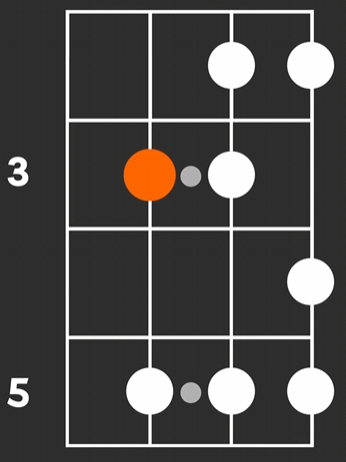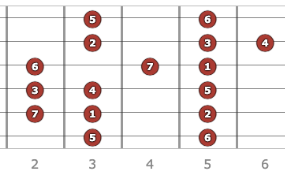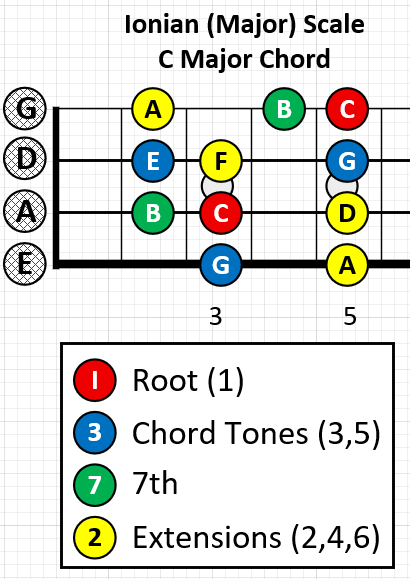I started BassBuzz a few weeks ago, then went on a fishing trip. I picked it back up when I came home. Until Friday, I was going through the course on my acoustic six-string guitar. I now have a proper bass. I like tracking progress somewhere, so I thought I’d start a thread. I’ll have questions, commentary, whining, etc.
Since I’m a former crappy acoustic six-string guitar player, I did have a “head start” on bass. There were things that were familiar to me, such as the musical alphabet, fretting, etc. Of course, the frets are a bit bigger, so my muscle memory needed some work! I didn’t “zoom through” the workouts as I wanted to make sure I started out right, but I wasn’t really challenged until I got to the latter part of Module 4. That’s the first time I felt rushed, and made more than a passing mistake here or there. Good! And then the bonus workout …. Billie Jean. I had put my bass away and watched the lesson, and I think it will be fun, but challenging. And actually I don’t think the mechanics of it will be too terrible, but the FEEL will be what I’ll have to come back to weekly to work on.
So … I’m officially at the end of Module 4, Lesson 5, getting ready to start the Bonus Benchmark lesson.
Billie Jean is quite the challenge for a n00b on the bass. My somewhat practiced six-stringer fretting isn’t working out, and I feel clumsy. Of course, I’m SUPPOSED to be clumsy as I’m new to this, so all is well. I’ll give it a bit more work and then move on, as suggested.
I realize I’m not supposed to just kill Billie Jean, but I was not happy with my fretting hand. Sure, that will be taken care of over the length of the course, but I want to work on it more now. I find myself with 5-10 minutes here and there, and I figure working on the major scale introduced in Module 7, Lesson 2, Part 1 will help with that. I watched the lesson, and it looks like he is introducing a shortened version of what I would call the “A Shape” Major scale (using CAGED). I don’t know what it’s called on bass, just yet, but that’s what I called it on a six-string guitar. He is doing just the one full octave, as shown below. The E string has easily reachable notes on the scale, so I’m going to include those. Of course, starting and ending on the root is important. I figure later in this or a follow-up course, the additional notes will be introduced. My plan is to go back to where I REALLY was in the course, but use my small periods of time to run this scale and to help my fingers get used to this fretboard. In time, exercises like Finger Gym, Spider, etc., will be appropriate.
That just looks like C Ionian. A good exercise that I still do everyday is to move across the fretboard playing different modes as I move up.
Yes, exactly, the Ionian. Regardless of the pattern, that’s what it is. On my six-string (what do I call it versus bass?) I was JUST getting into modes, and look forward to getting there with bass. I realize there aren’t the CAGED shapes for scales, then tying them all together to move all over, but there is something that is equivalent on bass. I don’t know what that is yet, but I’m happy to see that since the first 4 strings are the same, I can apply things that I was beginning to understand on my six-string to the bass.
I’ve only gotten to the major and minor scales on guitar so I’m not sure. If I’m understanding what you’re asking, look up the scale shapes for the different modes (phrygian, lydian etc).
I wasn’t really asking, but would have in time, so why not now? On a six-string, to give someone mastery in moving all over the fretboard as they please or need to, there are the boxy type CAGED patterns for a scale. In reality, you want to get to where you can move in and out of each of those patterns, and the fretboard becomes one large scale. Many very famous and competent musicians make their living in one or two box patterns, and their learned licks go up and down the neck. Bass is primarily a rhythm instrument, so it’s not focused on as much. I say that, not really knowing what I’m talking about on bass, as I’m new, but it seems that way. Knowing where to get to a root and the shape of getting to 1, 3, 5, and 7 seems to be what would get you plenty of action on a jam or a band. Again, I’m new here, so what the hell do I know?
Basically, I was using a scale to get my fretting hand used to moving, in 5-minute increments. I used the Major Scale because it’s normally one of the recommended ones to use, and Josh has it in his beginner course, one that I’m going through right now.
I was watching a bass scales video by Josh to make sure I’m doing things correctly, micro-shifting how he suggests, etc., and he demonstrated moving the C Major shape from the A string to the E string. What? Then I recalled that with the bass, ALL of the strings are perfect 4ths. On a six-string guitar, it’s the same except for the B string, which is a major 3rd, and brings forth the necessity of things like CAGED.
While there are many things that help me on bass from the six-string, I’m having to do some translation as well. I was barely holding on with the six-string, and that superficial knowledge is showing itself now.
If you want to break your brain, if you call G the root, what you actually made there is G Mixolydian, which is enharmonic with C Ionian ![]()
I’m just starting to peek into that. I was, anyway, in guitar, but once I get a certain way in bass I’ll do the same.
M5, L3 completed. It’s taking me a few repetitions to get the movements down, but I’m holding on through the full workout. I expect this to go to the wayside before long.
Took the weekend off for a trip with the wife, but we didn’t get a double to lay my bass on, so I left it at home. I told my wife we need to account for that the next time we make reservations. So that’s solved, I assume.
This morning I ran the C Major scale a bit to warmup and then repeated M5 L1-L3 to get back in the groove. Next up is M5-L4, which is going over repeat signs. I’ve done this before, so it will be a good refresher, and I’ll get to play a promised funky groove. Oh yeah I’ve also been using some away-from-bass time to learn the notes on the staff.
Ionian Mode Practice.pdf (127.6 KB)
For 5-minute stretches when I can grab my bass, I’m focusing on the C Major Scale (Ionian) and the 1–3–5–7 shape. I put together a simple PDF with my practice plan. Over the course of the day I’ll get through all of it, and I can also use parts of it as a warmup. I’ve got a metronome on my desk to add once the mechanics of the scale/pattern feel smoother.
This is meant to be a starter routine, simple by design. I know it can grow more complex later, but I’d appreciate any input or corrections you might have.
I will say I’m looking forward to learning a few songs. I know that’s coming in the course, but for now, outside of my scale practice thing, I’m staying on course with the course. Of course.
“Gimmie Some Lovin’” by the Spencer Davis Group pushed me for sure. It’s not terribly difficult, but I felt rushed and fell behind and got confused a few times on the fast workout. I could do the slow and medium, but the fast was a bit much. Per Josh, I’m moving on. And that unlocked a song! “Bad Moon Rising by Creedence Clearwater Revival” will be the first full song I’ll work on here and there, but steadily.
I finished Module 6, Lesson 4 just now. It’s the Badass Coordination Builder lesson. I did well in the slow, pretty good in the medium, and not great in the full. I could play it, but only if I fretted and plucked lightly. If I fully played, I would only do the plucking or fretting well, but not both, over the course of the play-along. All is well, I’ll move on and come back again at some point.
I found a little extra time today and completed Module 7, Lesson 3. I finished the first improv using the Major scale up the neck, and though it was awkward, it was fun.
Wellllll I am a newly minted Major Scale Master, so if ya’all need any advice on Major scales …. you can also do Module 7!
Module 7, Lesson 6 completed. I’m still barely hanging on during the full workouts, sometimes playing as it should be, other times getting lost, and then sometimes getting back on time. When I’m barely keeping up, I am playing weak notes and fretting “non optimally,” so there is plenty of work to be done.


